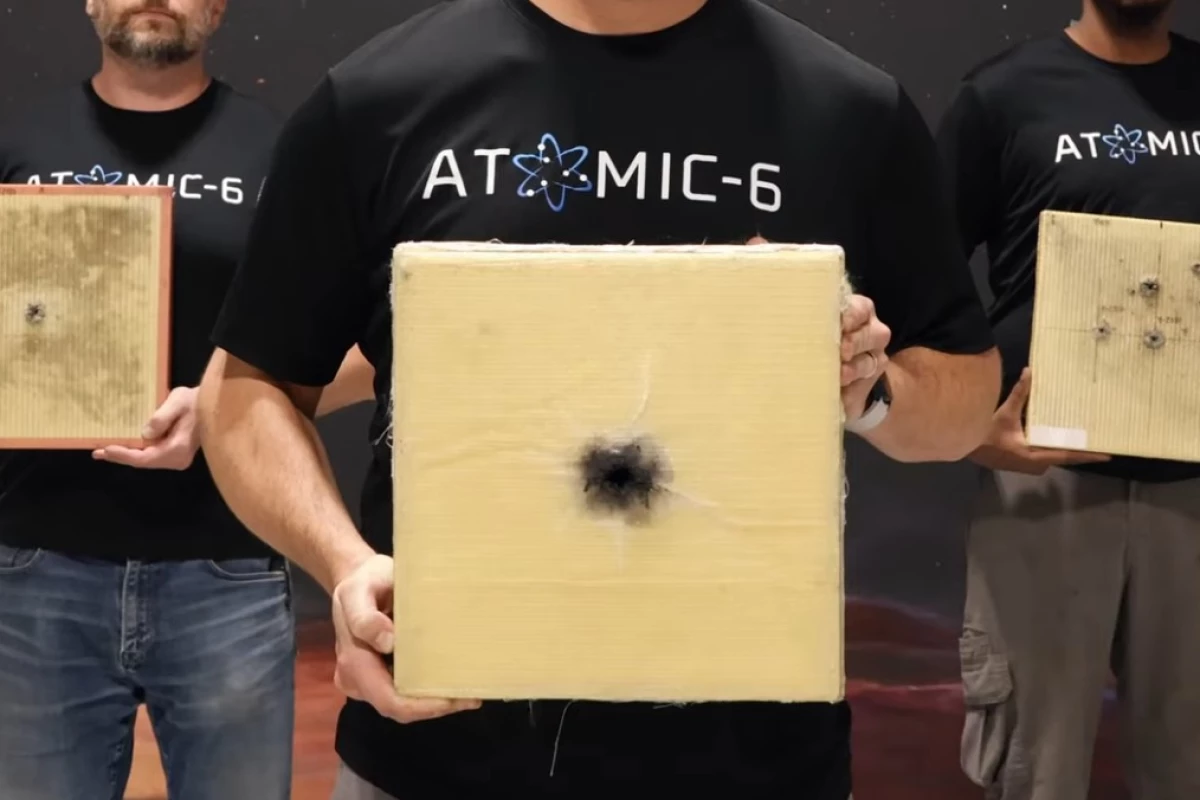Science
Atomic-6 Launches Innovative Space Armor to Protect Satellites

The growing threat of space debris has prompted Atomic-6 to unveil its new Space Armor tiles, designed to protect satellites from collisions with hypersonic debris. With over 130 million pieces of debris currently orbiting the Earth, the risk of catastrophic collisions is a significant concern for space agencies and commercial operators alike.
The majority of this debris consists of objects smaller than a paint chip. Despite their size, these fragments can cause severe damage when traveling at hypersonic speeds. Recent efforts to mitigate this risk include enhancing tracking systems, improving spacecraft designs, and establishing protocols for decommissioning defunct satellites. Protective measures, such as advanced armor for spacecraft, have also gained attention.
Advancements in Satellite Protection
Historically, the most widely used protective armor is the Whipple Shield, developed by astronomer Fred Whipple in the 1940s. This multi-layered shield has been employed in critical missions, including those involving the Apollo program. It features layers of aircraft-grade aluminum separated by gaps or foam polymer fillings, designed to dissipate energy from micrometeorite impacts. However, the Whipple Shield has limitations, including complexity in manufacturing, weight, and the potential to create additional debris upon impact.
In response to these challenges, Atomic-6 has developed Space Armor over an 18-month period. This innovative product consists of tiles made from a proprietary polymer blend, formed through a confidential process. Each tile measures one foot by one foot (30 cm by 30 cm) and is one inch (2.5 cm) thick, with custom sizes available up to 3.3 ft by 3.3 ft (1 m by 1 m).
The company asserts that Space Armor can withstand impacts exceeding 4.35 miles per second (7 km/s) while producing significantly less debris than traditional armor. Two variants of Space Armor are available: a lighter, thinner version capable of withstanding 90% of expected debris up to 3 mm in diameter, and a heavy-duty option designed for larger debris, up to 12.5 mm wide.
Enhanced Capabilities and Strategic Importance
Another significant advantage of Space Armor lies in its radio transparency. Unlike the Whipple Shield, which can obstruct radio signals, Space Armor allows for the creation of radomes and other structures that protect radar and communication antennas without sacrificing operational capabilities. Atomic-6 also offers a radio-opaque version for specific applications.
“This is a big deal,” said Trevor Smith, CEO of Atomic-6. “We made the first radomes that can stop orbital debris. You don’t have to sacrifice communications to protect your spacecraft anymore. This little composite tile preserves mission-critical functions, thereby protecting spacecraft, space stations, and people in orbit from increasingly prevalent, yet invisible threats.”
In light of rising geopolitical tensions and concerns over potential space-based attacks, the importance of safeguarding satellites and astronauts has become paramount. As space continues to grow in strategic significance, the development of effective protective measures like Space Armor is increasingly essential for maintaining operational safety in orbit.
With innovations like this, Atomic-6 is positioning itself at the forefront of the space defense industry, addressing a critical need for enhanced protective solutions in an era where space debris poses an ever-growing threat.
-

 Science2 months ago
Science2 months agoInventor Achieves Breakthrough with 2 Billion FPS Laser Video
-

 Health2 months ago
Health2 months agoCommunity Unites for 7th Annual Into the Light Walk for Mental Health
-

 Top Stories2 months ago
Top Stories2 months agoCharlie Sheen’s New Romance: ‘Glowing’ with Younger Partner
-

 Entertainment2 months ago
Entertainment2 months agoDua Lipa Aces GCSE Spanish, Sparks Super Bowl Buzz with Fans
-

 Health2 months ago
Health2 months agoCurium Group, PeptiDream, and PDRadiopharma Launch Key Cancer Trial
-

 Top Stories2 months ago
Top Stories2 months agoFormer Mozilla CMO Launches AI-Driven Cannabis Cocktail Brand Fast
-

 World2 months ago
World2 months agoIsrael Reopens Rafah Crossing After Hostage Remains Returned
-

 Entertainment2 months ago
Entertainment2 months agoMother Fights to Reunite with Children After Kidnapping in New Drama
-

 World2 months ago
World2 months agoR&B Icon D’Angelo Dies at 51, Leaving Lasting Legacy
-

 Business2 months ago
Business2 months agoTyler Technologies Set to Reveal Q3 Earnings on October 22
-

 Health2 months ago
Health2 months agoNorth Carolina’s Biotech Boom: Billions in New Investments
-

 Health2 months ago
Health2 months agoYouTube Launches New Mental Health Tools for Teen Users









